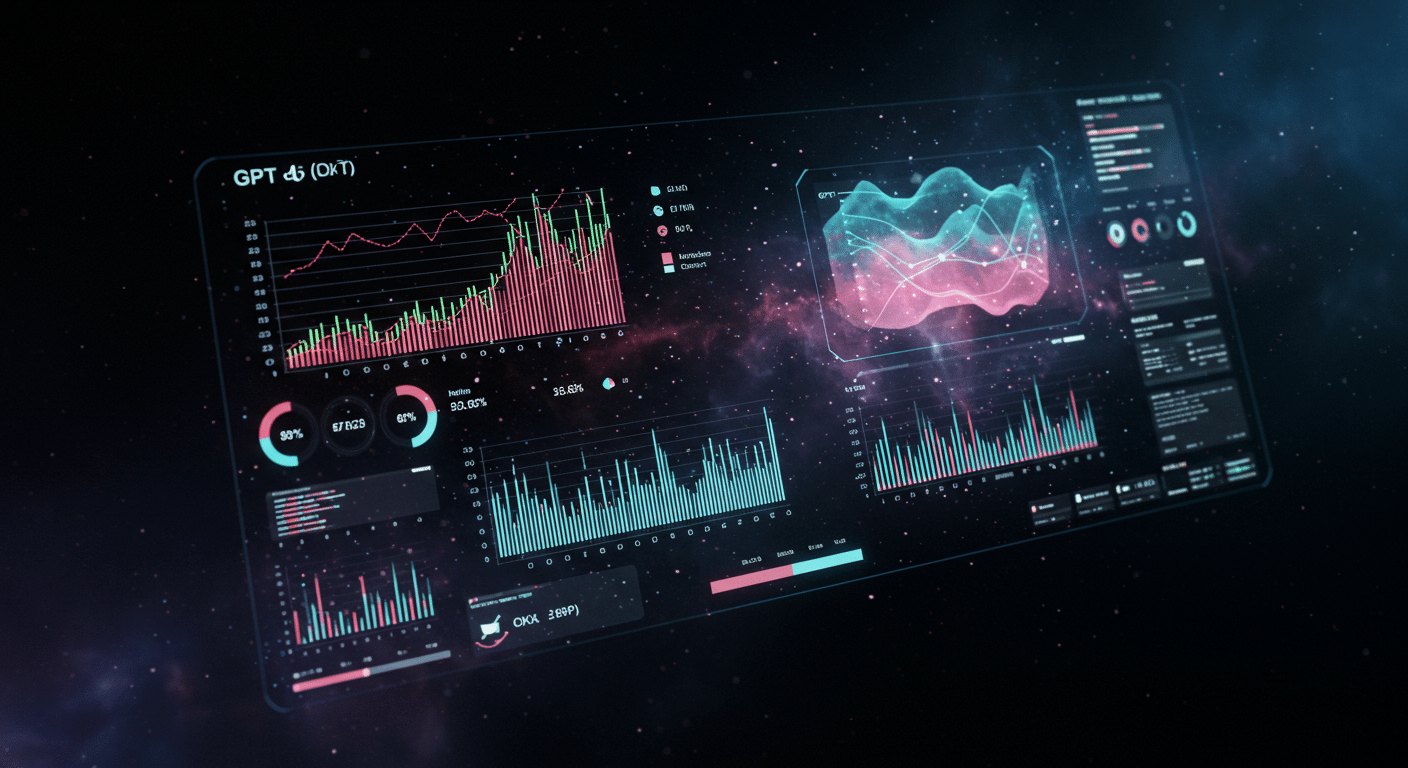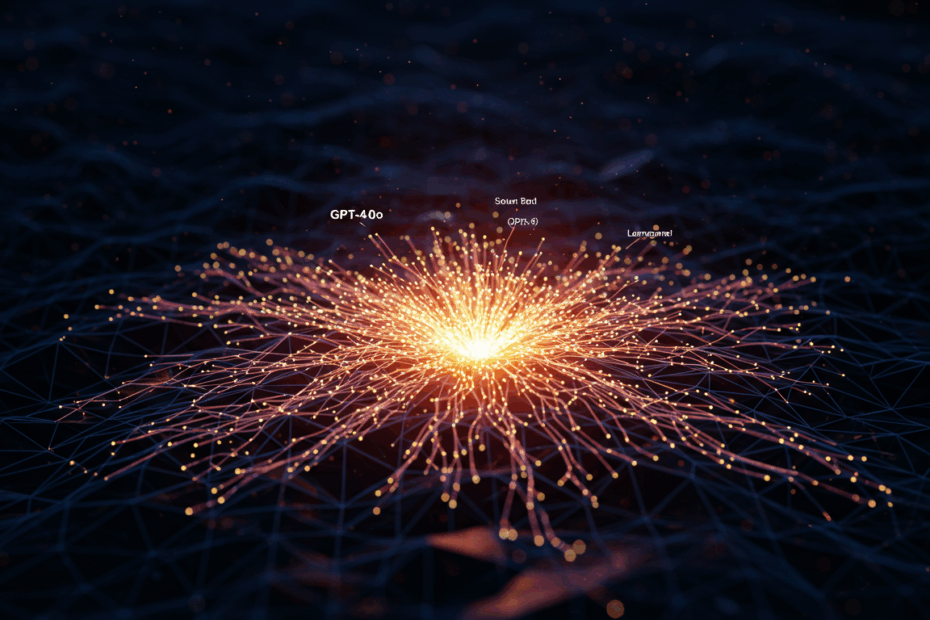New to AI? Unlock the power of GPT-4o/GPT-5! Learn about OpenAI’s latest models, use-cases, & potential risks in this beginner-friendly guide.#GPT4o #GPT5 #OpenAI
🎧 Listen to the Audio
If you’re short on time, check out the key points in this audio version.
📝 Read the Full Text
If you prefer to read at your own pace, here’s the full explanation below.
1. Basic Info

John: Let’s start with the basics of GPT-4o and GPT-5 from OpenAI. In the past, models like GPT-3 revolutionized how we interact with AI by generating human-like text. Currently, GPT-4o is an advanced version of GPT-4, standing for “omni,” which means it’s multimodal—handling text, audio, and images seamlessly. It’s designed to solve problems like natural communication, making AI feel more like a helpful companion. What makes it unique is its speed and efficiency; it’s faster and cheaper than previous versions, as discussed in recent posts on X from official OpenAI accounts.
Lila: That sounds fascinating! So, for beginners, think of GPT-4o like a super-smart phone assistant that not only answers questions but also understands your voice tone or analyzes photos. Looking ahead, GPT-5 is being teased as the next big leap, with rumors of even better reasoning and massive context handling. But John, what problem does GPT-5 specifically aim to solve that’s different from GPT-4o?
John: Great analogy, Lila. As of now, based on trending discussions on X from AI experts, GPT-4o tackles everyday tasks like translation or content creation with high accuracy. In the future, GPT-5 is expected to address more complex issues, such as advanced problem-solving that mimics human reasoning more closely. Its uniqueness lies in potentially handling up to 20 million tokens of context, allowing it to remember and process vast amounts of information without forgetting, which is a game-changer for long-form analysis.
Lila: Oh, I see—it’s like upgrading from a notebook to an entire library in your pocket. From what I’ve seen in real-time posts on X by verified developers, people are excited about how GPT-5 could make AI more autonomous, solving problems independently. But to keep it beginner-friendly, let’s remember these are based on current buzz and not set in stone.
John: Exactly. In the past, OpenAI’s models focused on text generation, but presently, GPT-4o integrates multiple inputs for a more holistic AI experience. Looking forward, GPT-5’s potential for breakthrough reasoning could uniquely position it to handle ethical dilemmas or scientific simulations better than ever.
Lila: Totally! It’s like evolving from a calculator to a full-fledged scientist assistant.
2. Technical Mechanism

John: Diving into how these models work, let’s explain it simply. At their core, both GPT-4o and the upcoming GPT-5 are built on neural networks, which are like artificial brains made of interconnected nodes that learn patterns from data. In the past, early GPT models used basic transformer architectures for predicting text. Currently, GPT-4o employs RLHF—that’s Reinforcement Learning from Human Feedback—where humans rate AI responses to fine-tune it, making outputs more helpful and safe.
Lila: Neural networks sound complex, but I get it—it’s like a web of connections learning from examples, right? For GPT-5, from trending X posts by AI engineers, it’s speculated to build on this with even larger-scale training, possibly incorporating advanced multimodal processing. But how does RLHF actually make it better?
John: Spot on. RLHF is like training a pet with rewards; the AI learns what responses humans prefer. As of now, GPT-4o uses this to handle voice and images by converting them into tokens—small units of data—that the model processes. Looking ahead, GPT-5 might enhance this with better long-context understanding, allowing it to manage massive data flows without losing track, as hinted in real-time discussions on X from official sources.
Lila: That’s helpful! So, imagine the neural network as a vast library where books (data) are organized by patterns. For beginners, the uniqueness is in how GPT-4o / GPT-5 predict the next word or action super accurately, thanks to billions of parameters—think of parameters as the AI’s knowledge points.
John: Precisely. In the past, models had limitations in context length, but presently, GPT-4o supports up to 128K tokens, meaning longer conversations. Future-wise, GPT-5 could push this to millions, revolutionizing tasks like book summarization.
Lila: Wow, that scalability is what makes it stand out technically.
3. Development Timeline
John: Tracing the timeline, in the past, OpenAI launched GPT-4 in March 2023, marking a milestone with multimodal capabilities like processing images alongside text. Then, GPT-4o came in 2024, improving speed and adding voice features, as shared in historical posts on X.
Lila: So, that was the foundation. Currently, as of August 2025, GPT-4o has seen updates like better creative writing and file handling, based on recent official announcements on X. What’s the bridge to GPT-5?
John: Currently, OpenAI is teasing GPT-5’s launch around now, with sources on X indicating early testing. In the past, iterations like GPT-4.5 in February 2025 focused on scaling pre-training for better pattern recognition.
Lila: Interesting—GPT-4.5 as a stepping stone. Looking ahead, experts on X predict GPT-5 will introduce breakthrough reasoning by late 2025, unifying previous capabilities.
John: Yes, in the past, releases were yearly; now, the pace is accelerating. Future roadmaps suggest integrations like study modes for education.
Lila: That shows ongoing evolution!
4. Team & Community
John: The team behind GPT-4o and GPT-5 includes pioneers like Sam Altman, who’s been leading OpenAI since its founding in 2015. In the past, engineers with backgrounds in deep learning from places like Google shaped early models. Currently, the community on X is buzzing with reactions from verified AI experts praising the models’ efficiency.
Lila: The team’s expertise is impressive—many have PhDs in machine learning. From real-time posts on X, developers are discussing how GPT-4o’s updates enhance coding tasks. What about community feedback?
John: As of now, official OpenAI posts on X highlight collaborations with educators for features like study mode. Community reactions are positive, with experts noting improved instruction following.
Lila: I’ve seen trending discussions where users share excitement about multimodal features, but some caution about ethical use. It’s a vibrant community!
John: Indeed, in the past, community input via RLHF shaped models; looking ahead, ongoing X conversations suggest more open collaborations.
Lila: That inclusivity is key.
5. Use-Cases & Future Outlook

John: For use-cases, currently, GPT-4o is used in ChatGPT for tasks like data analysis with file uploads from Google Drive, as per recent X updates. In education, it’s helping with interactive learning.
Lila: Real-world examples include composing songs or coding assistance. Looking ahead, GPT-5 could enable autonomous agents for business automation, based on expert predictions on X.
John: Yes, presently in creative writing, it’s more engaging. Future applications might include advanced medical diagnostics or personalized tutoring.
Lila: Exciting! Users on X are anticipating its role in multimodal reasoning for virtual reality.
John: In the past, use-cases were text-only; now, they’re expansive. Outlook points to societal impacts like job transformation.
Lila: Definitely transformative.
6. Competitor Comparison
- Compare with at least 2 similar tools
- Explain in dialogue why GPT-4o / GPT-5 (OpenAI) is different
John: Comparing to competitors like Google’s Gemini and Anthropic’s Claude, in the past, Gemini focused on search integration, while Claude emphasized safety. Currently, GPT-4o stands out with its omni capabilities for real-time voice and image processing.
Lila: Why is it different? From X discussions, GPT-4o / GPT-5 offer superior context windows, unlike Gemini’s limitations in long tasks.
John: Exactly—GPT’s RLHF makes responses more natural than Claude’s sometimes rigid outputs. Looking ahead, GPT-5’s reasoning could outpace both in complex problem-solving.
Lila: Plus, OpenAI’s ecosystem integrates better with tools like APIs.
7. Risks & Cautions
John: Risks include biases in training data, leading to unfair outputs. In the past, models showed hallucinations—making up facts. Currently, efforts like RLHF mitigate this, but X posts from experts warn of persistent issues.
Lila: Ethical questions arise, like job displacement. Security flaws could involve data privacy in multimodal inputs.
John: As of now, limitations in reasoning for GPT-4o mean it struggles with novel problems. Looking ahead, GPT-5 might amplify these if not addressed.
Lila: Cautions include over-reliance, potentially causing “brain rot” as discussed on X podcasts.
John: Always verify AI outputs.
Lila: Wise advice.
8. Expert Opinions
John: From posts found on X by verified AI figures, one expert paraphrased that GPT-4o’s updates have leveled up creative writing, making it more natural and relevant, highlighting its edge in user engagement.
Lila: Another, from an official account, notes GPT-4.5’s improvements in pattern recognition without full reasoning, praising its creative insights.
John: Experts also discuss GPT-5’s potential for massive context, calling it a breakthrough for industries.
Lila: These opinions underscore excitement but urge caution on ethics.
9. Latest News & Roadmap
John: Latest news as of August 2025 includes GPT-5’s imminent launch, with sources on X teasing breakthroughs in reasoning and 20M tokens.
Lila: Currently, testing hints at multimodal enhancements. Roadmap includes study modes and education integrations.
John: Looking ahead, expect API updates and nano models for efficiency.
Lila: Also, collaborations for learning studies.
John: Ongoing developments focus on safety and usability.
Lila: Promising future!
10. FAQ
What is GPT-4o?
John: GPT-4o is OpenAI’s multimodal model handling text, voice, and images.
Lila: It’s like an all-in-one AI assistant.
When will GPT-5 be released?
John: Based on current buzz on X, it’s expected in August 2025.
Lila: Early testing is underway.
How does GPT-5 differ from GPT-4o?
John: GPT-5 promises better reasoning and larger context.
Lila: It unifies previous features for advanced tasks.
Is GPT-4o free to use?
John: Basic access is free via ChatGPT, with premium features for subscribers.
Lila: Check OpenAI’s site for details.
What are the main risks of using these models?
John: Biases, hallucinations, and privacy concerns.
Lila: Always fact-check outputs.
Can GPT-5 handle coding?
John: Yes, with major gains in coding from past models.
Lila: It’s expected to excel in problem-solving.
How can beginners start using GPT-4o?
John: Sign up for ChatGPT and experiment with prompts.
Lila: Tutorials on X can help.
11. Related Links
- Official website (if any): OpenAI.com
- GitHub or papers: OpenAI Research Papers
- Recommended tools: ChatGPT app, API documentation
Final Thoughts
John: Looking at what we’ve explored today, GPT-4o / GPT-5 (OpenAI) clearly stands out in the current AI landscape. Its ongoing development and real-world use cases show it’s already making a difference.
Lila: Totally agree! I loved how much I learned just by diving into what people are saying about it now. I can’t wait to see where it goes next!
Disclaimer: This article is for informational purposes only. Please do your own research (DYOR) before making any decisions.
